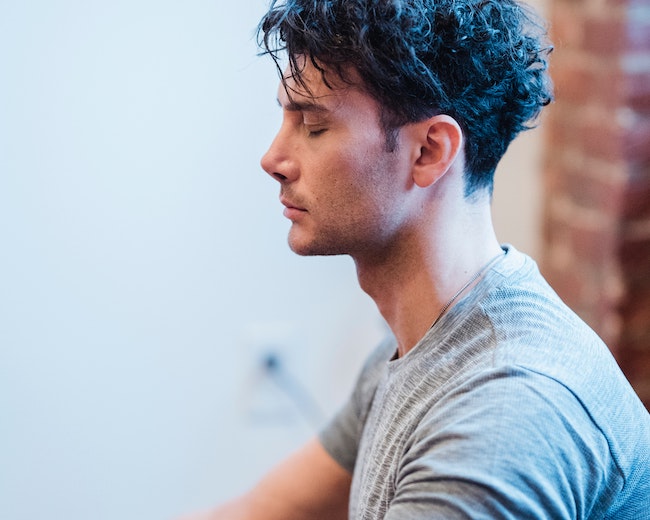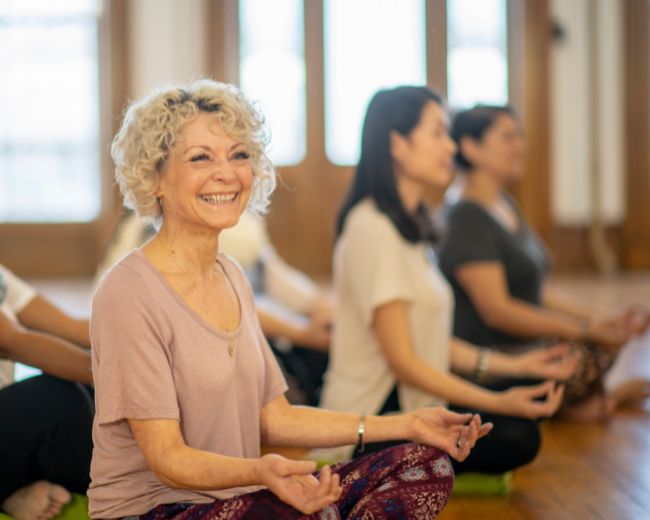Teaching pranayama is super powerful and can be very simple. You don’t even need to call it Pranayama. The term ‘breath work’ might be more accessible to some students. One of my favourite forms of breath work encourages students to tune into their own energetic state, and empowers them to dial their energy up or down utilising their breath.
I’ve been practicing and teaching this technique for several years now, but never had a name for it. Then a teacher I recently trained with described it as ‘non-prescriptive breath work’. It’s not a particularly sexy name, so I probably won’t use it for my students, but that’s how I’ll think of it from now on.

Teaching Non-Prescriptive Breath Work
Set your students up in a comfortable seat and invite them to tune in to how they’re feeling. Bring their attention to their physical body, becoming aware of sensations. You could give them some guidance by asking them to feel the weight of their body, the warmth of their body, the touch of their clothing on their skin, and so on.
Then invite them to feel any sensations created by their breath. Perhaps there’s a coolness as the air moves into their nostrils and they can follow that feeling through their sinuses and throat. Maybe they feel their belly or ribs gently expanding and contracting.
Bring your students’ awareness to the differing qualities of the in and out breaths: when they breathe in and draw more pranayama (or energy) into their bodies, they might find they feel more invigorated or stimulated. Physically, perhaps they feel taller, more expansive. Whereas on the out breath, they might experience a sense of letting go: releasing tension or anxiety, calming and quieting the mind. Maybe they feel their skin softening; their shoulders descending.
Then go a little deeper; ask them to notice their mental and energetic state: are they feeling tired and lethargic? Or is their mind busy; overstimulated?
Let them know that they can use their breath to modify how they’re feeling: if their mind feels over-active and they’re having trouble focusing, or if they feel anxious, ask them to slow down their exhalations, making the out breath longer and slower than the in breath. If they’re feeling flat or sleepy, invite them to focus on their in breaths, making the inhalation fuller and deeper.

Let them continue for a minute or two before settling back into a natural, easy breath, and encourage them to notice how they feel now: what’s changed? What remains the same?
How it Works
Extending the exhalation triggers the parasympathetic nervous system (the ‘rest and digest’ aspect of the nervous system). So emphasising long, slow exhalations slows our heart rate and sends a signal to our brain that we’re calm and safe. This is what most of us need most of the time!
On the other hand, lengthening the inhalation triggers the sympathetic nervous system (the ‘fight or flight’ portion). Focusing on big, deep inhalations increases our heart rate and has a stimulating effect – exactly what we need if we’re feeling sleepy or lethargic.
For more information on how this works, read this excellent article by Baxter Bell, MD.
Looking for more ways to calm and centre your students? Read up on Japa Mala, a beautiful meditation practice to focus the mind.






Leave A Comment